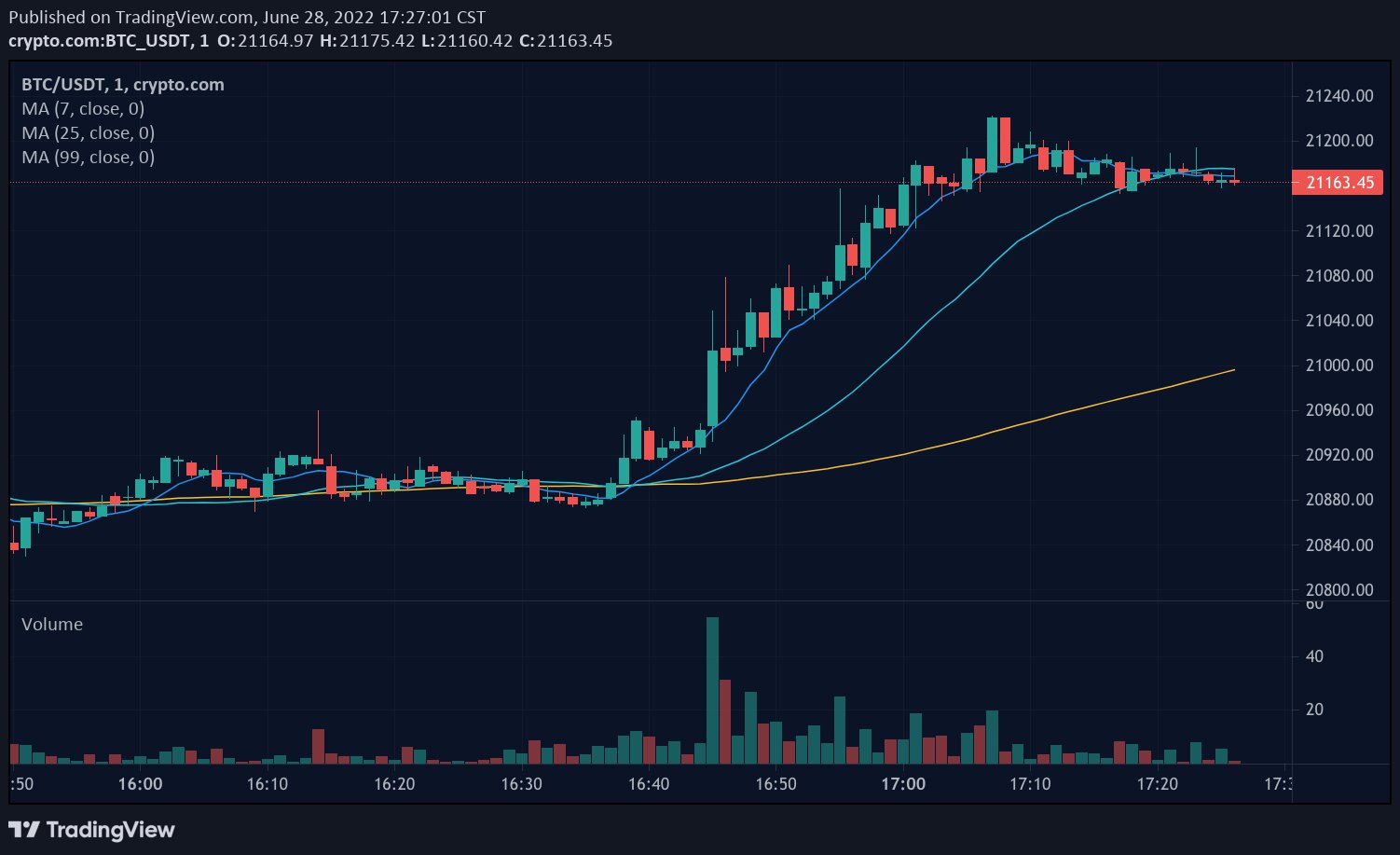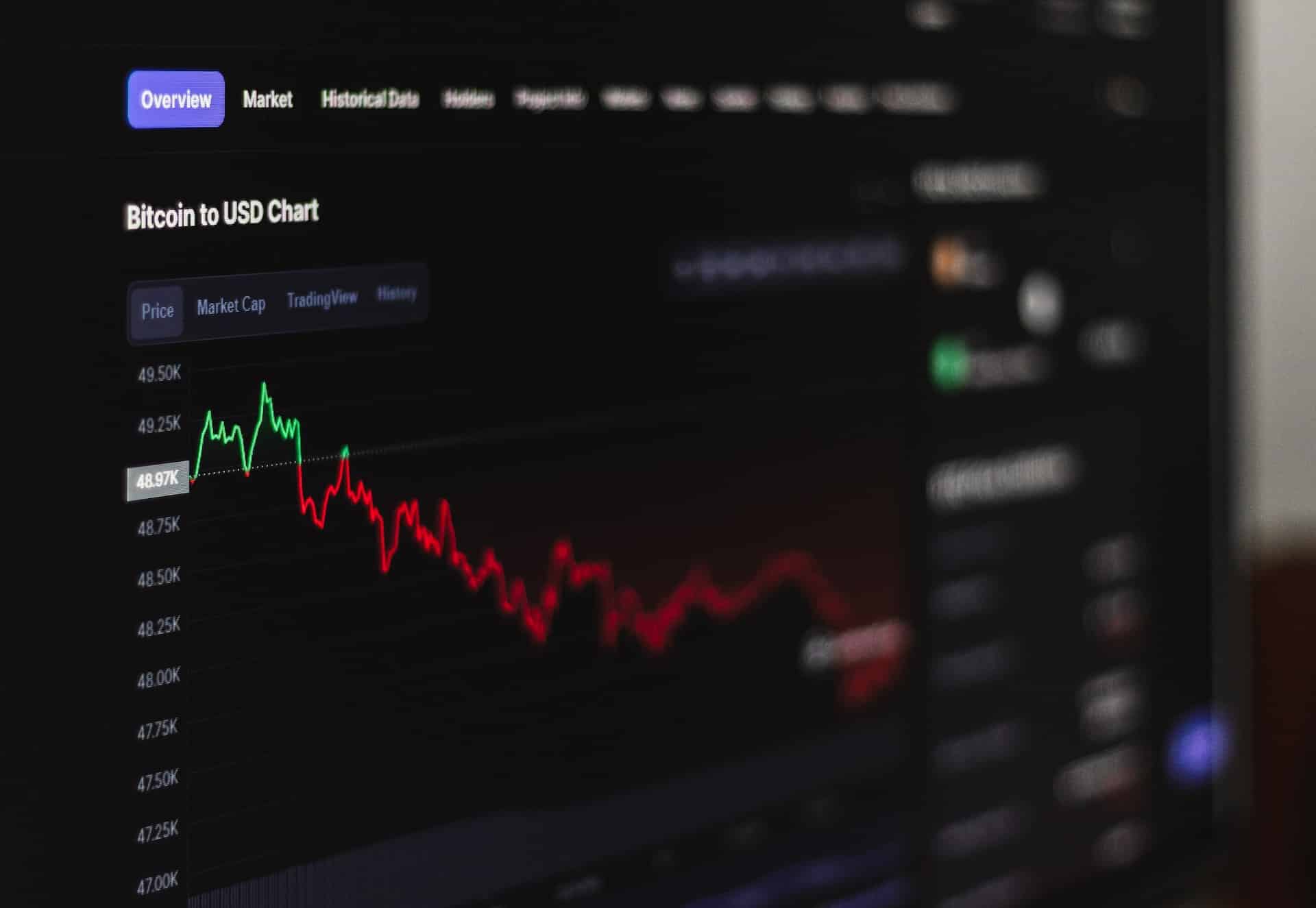Introduction
Welcome to the world of cryptocurrency trading, a dynamic and exciting arena where digital assets are bought, sold, and exchanged in the pursuit of profit. In recent years, trading cryptocurrency has gained tremendous popularity, attracting both experienced traders and newcomers alike. This form of trading, conducted on specialized platforms called cryptocurrency exchanges, offers numerous opportunities for individuals to potentially grow their wealth.
So, what exactly is trading cryptocurrency? In simple terms, it involves buying and selling digital currencies with the intention of making a profit. Cryptocurrencies, such as Bitcoin, Ethereum, and Litecoin, operate on decentralized networks using blockchain technology. These digital assets experience price fluctuations due to factors such as market demand, investor sentiment, and economic news.
The concept of trading cryptocurrencies may seem intimidating at first, but with the right knowledge and strategies, anyone can participate in this exciting and potentially lucrative market. Whether you are interested in short-term trading to capitalize on price movements or long-term investing in promising projects, understanding the fundamentals of trading cryptocurrency is crucial.
This article will guide you through the world of trading cryptocurrency, providing you with the necessary knowledge to get started and thrive in this dynamic environment. We will explore different types of trading strategies, the importance of technical and fundamental analysis, the risks involved, and practical tips for successful trading.
It is important to note that trading cryptocurrency comes with inherent risks, and past performance is not indicative of future results. It is always recommended to do your own research, seek advice from reputable sources, and invest only what you can afford to lose.
Now, let’s delve into the intricate world of trading cryptocurrency and discover the techniques and strategies that can help you navigate this exciting market.
What is Trading Cryptocurrency?
Trading cryptocurrency refers to the buying, selling, and exchange of digital assets or cryptocurrencies with the aim of making a profit. It involves actively participating in the market to take advantage of price movements and capitalize on opportunities for financial gains.
Cryptocurrencies are digital or virtual currencies that use cryptography for security and operate on decentralized networks called blockchains. Some popular cryptocurrencies include Bitcoin, Ethereum, Ripple, Litecoin, and many more. Unlike traditional currencies issued by central banks, cryptocurrencies are not controlled by any single authority. This decentralized nature gives them unique characteristics and opens up new possibilities for trading.
When you trade cryptocurrencies, you are essentially speculating on their prices. The goal is to buy a cryptocurrency at a lower price and sell it at a higher price, thereby profiting from the price difference. Traders can take advantage of both upward and downward price movements, using various trading strategies to make informed decisions.
It is important to understand that trading cryptocurrency is different from investing in it. While investors typically hold onto their digital assets for the long term, traders actively engage in buying and selling within shorter time frames, aiming to profit from short-term price fluctuations.
Trading cryptocurrency can be done through specialized platforms called cryptocurrency exchanges. These exchanges serve as online marketplaces where traders can access a wide range of cryptocurrencies, trade them against other digital assets or traditional currencies, and monitor their positions and portfolio performance.
It is worth noting that trading cryptocurrency is a relatively new and rapidly evolving market. Cryptocurrencies are highly volatile, meaning their prices can experience significant fluctuations in short periods. This volatility presents opportunities but also comes with higher risks compared to traditional financial markets.
In the next sections, we will explore how trading cryptocurrency works, the different types of trading strategies, the risks involved, and the essential steps to get started in this exciting and potentially lucrative endeavor.
How Does Trading Cryptocurrency Work?
Trading cryptocurrency involves a series of steps and processes that allow individuals to buy, sell, and exchange digital assets for profit. Understanding how trading cryptocurrency works is essential for anyone looking to participate in this dynamic and potentially lucrative market.
Here’s a simplified overview of how trading cryptocurrency works:
- Opening an Account: The first step is to open an account with a reputable cryptocurrency exchange. There are numerous exchanges available, each with its own features and fees. It is important to choose a reliable exchange that aligns with your trading goals and offers a secure platform for your transactions.
- Deposit Funds: Once you have opened an account, you will need to deposit funds into your exchange account. Most exchanges accept deposits in traditional currencies such as USD, EUR, or GBP. Some exchanges also allow deposits in other cryptocurrencies.
- Choosing a Trading Pair: Cryptocurrency trading is typically done in trading pairs. A trading pair consists of two cryptocurrencies that can be traded against each other, such as Bitcoin (BTC) and Ethereum (ETH). You will need to choose the trading pair you want to trade based on your analysis and market preferences.
- Market Orders and Limit Orders: When placing a trade, you have the option to use either a market order or a limit order. A market order is executed immediately at the best available price in the market. On the other hand, a limit order allows you to set a specific price at which you want to buy or sell a cryptocurrency. The order will be executed only when the market reaches your desired price.
- Monitoring and Managing Trades: Once your trade is executed, it is important to monitor the market and manage your positions. This involves keeping an eye on price movements, setting stop-loss and take-profit levels, and being prepared to adjust your trading strategy based on market conditions.
- Closing Trades: When you decide to close a trade, you will need to place an order in the opposite direction of your initial trade. For example, if you bought Bitcoin with Ethereum, you will need to sell Bitcoin for Ethereum to close the trade. The goal is to sell at a higher price than the buying price, thus making a profit.
It is important to note that successful cryptocurrency trading requires a combination of technical analysis, fundamental analysis, risk management, and a disciplined approach. Traders utilize various tools and indicators to analyze price charts, identify trends and patterns, and make informed trading decisions.
With the advent of advanced trading platforms and the availability of trading bots and algorithms, trading cryptocurrency has become more accessible to individuals with different levels of experience. However, it is crucial to continuously educate yourself, stay updated with market news and developments, and adapt to the ever-changing dynamics of the cryptocurrency market.
As we proceed, we will explore the different types of trading strategies, the importance of technical and fundamental analysis, the risks involved, and practical tips for successful trading in the cryptocurrency market.
Types of Trading Cryptocurrency
Trading cryptocurrency offers a variety of approaches and strategies that cater to different trading styles and goals. Here are some common types of trading cryptocurrency:
- Day Trading: Day trading involves opening and closing trades within the same day. Day traders seek to take advantage of short-term price fluctuations and capitalize on intraday volatility. They closely monitor the market throughout the day and aim to make profits on multiple trades.
- Swing Trading: Swing traders hold positions for a few days to several weeks, taking advantage of medium-term price movements. This approach involves identifying trends and buying or selling at strategic points to capture potential price swings. Swing traders often use technical analysis indicators and chart patterns to make informed decisions.
- Position Trading: Position traders take a longer-term approach, holding positions for weeks, months, or even years. They aim to benefit from long-term market trends and significant price movements. Position traders focus on fundamental analysis, considering factors such as the project’s technology, team, market adoption, and future potential.
- Scalping: Scalping is a high-frequency trading strategy where traders aim to make small profits on numerous trades throughout the day. Scalpers capitalize on short-term price fluctuations and rely on technical analysis tools and indicators to identify quick and frequent trading opportunities.
- Arbitrage: Arbitrage traders take advantage of price disparities between different exchanges or trading pairs. They buy a cryptocurrency at a lower price on one exchange and sell it at a higher price on another exchange, making a profit from the price difference. Arbitrage opportunities are usually short-lived and require quick execution.
Each trading style has its own advantages and considerations. Day trading and scalping, for example, require quick decision-making skills, as positions are typically held for a short period. Swing trading and position trading, on the other hand, allow for more in-depth analysis and give traders the opportunity to capture larger price movements.
It is important to choose a trading style that aligns with your personality, risk tolerance, and time commitment. Experimenting with different strategies, paper trading, and analyzing past trades can help you identify the approach that suits you best.
Keep in mind that successful trading requires discipline, risk management, and a thorough understanding of the market. It is also important to adapt your strategy as market conditions change and continuously educate yourself to stay ahead in the fast-paced cryptocurrency market.
In the following sections, we will explore how to get started with trading cryptocurrency, choose a cryptocurrency exchange, understand market and limit orders, analyze trades using technical and fundamental analysis, and manage the risks and challenges associated with trading in this exciting market.
Getting Started with Trading Cryptocurrency
If you’re interested in trading cryptocurrency, here are the essential steps to get started in this exciting market:
- Education and Research: Before diving into cryptocurrency trading, it is crucial to educate yourself about the market, understand basic trading concepts, and stay updated with industry news and trends. Learn about different cryptocurrencies, their technology, and their potential use cases. Familiarize yourself with trading terminology and concepts such as market orders, limit orders, stop-loss orders, and candlestick chart patterns.
- Selecting a Cryptocurrency Exchange: Choose a reputable cryptocurrency exchange that meets your trading needs. Look for exchanges that offer a wide range of cryptocurrencies, have strong security measures in place, provide reliable customer support, and offer competitive trading fees. Make sure to check if the exchange is available in your country and complies with local regulations.
- Account Registration and Verification: Sign up for an account on your chosen exchange and complete the necessary verification process. This might include providing personal information and submitting identification documents to comply with Know Your Customer (KYC) and Anti-Money Laundering (AML) regulations.
- Secure Your Account: Take steps to ensure the security of your cryptocurrency exchange account. Enable two-factor authentication (2FA) for an extra layer of security and use a strong, unique password. Regularly update your software and be cautious of phishing attempts or suspicious emails.
- Deposit Funds: Deposit funds into your exchange account. Most exchanges accept deposits in traditional currencies, such as USD or EUR, as well as cryptocurrencies. Follow the deposit instructions provided by the exchange, and be aware of any fees or minimum deposit requirements.
- Understanding Market Orders and Limit Orders: Familiarize yourself with the different types of orders available on the exchange. Market orders execute trades at the current market price, while limit orders allow you to set a specific price at which you want to buy or sell a cryptocurrency. Understanding how to use these order types is crucial for executing trades effectively.
- Developing a Trading Strategy: Every successful trader needs a well-defined trading strategy. Determine your risk tolerance, preferred trading style, and goals. Decide on factors such as the cryptocurrencies you want to trade, the timeframes you will focus on, and the indicators or tools you will use for analysis. A systematic approach can help you make informed decisions and manage your trades effectively.
- Practicing with Demo Accounts: Many cryptocurrency exchanges offer demo accounts, allowing you to practice trading with virtual funds. Utilize these accounts to familiarize yourself with the trading platform, test your strategies, and gain experience without risking real money.
- Start Small and Manage Risks: As a beginner, it is advisable to start with small trade sizes and gradually increase your exposure as you gain more experience and confidence. Implement risk management techniques such as setting stop-loss orders to limit potential losses. Be prepared to accept that not all trades will be profitable, and learn from both successful and unsuccessful trades.
- Continued Learning and Adaptation: The cryptocurrency market is constantly evolving, so it’s crucial to stay updated with market news, trends, and developments. Continuously educate yourself and adapt your strategies accordingly. Join online trading communities, read books and articles, and follow reputable traders on social media platforms to expand your knowledge base.
Remember, trading cryptocurrency involves risks, and past performance is not indicative of future results. It is important to invest only what you can afford to lose, and be prepared to manage both profits and losses. With proper education, research, and a sound trading strategy, you can embark on your journey as a cryptocurrency trader.
In the following sections, we will explore how to choose a cryptocurrency exchange, understand market orders and limit orders, strategies for trading cryptocurrency, the importance of technical and fundamental analysis, and the risks and challenges associated with trading in this exciting market.
Choosing a Cryptocurrency Exchange
When it comes to trading cryptocurrency, choosing the right cryptocurrency exchange is crucial. The exchange you select will serve as your gateway to the cryptocurrency market, facilitating your trades and securing your digital assets. Here are some factors to consider when choosing a cryptocurrency exchange:
- Reputation and Security: Look for exchanges with a solid reputation and a strong track record in the industry. Research the exchange’s history, read user reviews, and check if it has experienced any security breaches in the past. Security should be a top priority, so ensure the exchange implements strict security measures, such as two-factor authentication (2FA), cold storage for funds, and data encryption.
- Range of Cryptocurrencies: Consider the range of cryptocurrencies offered by the exchange. While major cryptocurrencies like Bitcoin and Ethereum are commonly available on most exchanges, some exchanges may offer a wider selection of altcoins and niche cryptocurrencies. If you have specific coins in mind for trading, ensure that they are listed on the exchange.
- Liquidity: Liquidity refers to the ease of buying or selling a cryptocurrency without significantly affecting its price. Exchanges with high liquidity provide better trading opportunities as they often have tighter spreads and faster execution. Check the trading volumes of the cryptocurrencies you are interested in to gauge the liquidity of the exchange.
- Trading Fees: Different exchanges charge different fees for trading cryptocurrencies. These fees can vary based on factors such as the trading volume, type of order, and membership level. Compare the fee structures of various exchanges to find the one that offers competitive fees without compromising on security and reliability.
- User Interface and Experience: The user interface of the exchange should be intuitive, user-friendly, and easy to navigate. A well-designed platform can enhance your trading experience and make it more efficient. Look for features such as real-time price charts, order books, and a responsive trading platform accessible across different devices.
- Customer Support: Good customer support is essential when dealing with any financial platform. Check if the exchange provides responsive customer support channels, such as live chat, email, or phone support. Prompt and helpful customer support can assist you in resolving any issues or concerns that may arise during your trading journey.
- Compliance and Regulations: Ensure that the exchange you choose is compliant with the regulatory requirements of your country. Some exchanges have restrictions on certain jurisdictions, so make sure the exchange is available in your location. Compliance with Know Your Customer (KYC) and Anti-Money Laundering (AML) regulations is an important aspect to consider as it provides an added layer of security.
- Additional Features: Some exchanges offer additional features that can enhance your trading experience, such as margin trading, futures trading, staking, or lending. These features may be useful depending on your trading goals and preferences, so consider if the exchange provides any special features that align with your needs.
By carefully evaluating these factors, you can find a cryptocurrency exchange that best suits your trading requirements. It is also advisable to start with smaller amounts when testing a new exchange to familiarize yourself with its features and performance before committing larger funds.
Remember that no exchange is completely risk-free, and it’s important to exercise caution and do your own due diligence before trusting any platform with your funds. Stay informed about the latest developments in the industry, as new exchanges with innovative features and enhanced security measures continue to emerge.
In the following sections, we will explore how to understand market orders and limit orders, different trading strategies, the importance of technical and fundamental analysis, and the risks and challenges associated with trading cryptocurrency.
Understanding Market Orders and Limit Orders
When trading cryptocurrency, understanding how to place market orders and limit orders is essential. These order types allow you to buy or sell cryptocurrencies at specific prices and under different circumstances. Let’s explore the differences between market orders and limit orders:
Market Orders:
A market order is an order to buy or sell a cryptocurrency at the best available price in the market. When you place a market order, you are essentially willing to buy or sell the cryptocurrency immediately, regardless of the current price.
For example, if you want to buy Ethereum using a market order, you would specify the quantity you wish to purchase, and the exchange will execute the order at the current market price. The order will be filled as soon as there are sellers willing to sell Ethereum at the prevailing market price.
It is important to note that the execution price of a market order may not be the same as the last traded price or the price displayed on the exchange’s platform at the time of placing the order. This is because the cryptocurrency market is constantly moving, and prices can change rapidly. As a result, you may experience slippage, which is the difference between the expected price at the time of placing the order and the actual executed price.
Limit Orders:
A limit order is an order to buy or sell a cryptocurrency at a specified price or better. Unlike market orders, limit orders allow you to set the price at which you are willing to buy or sell, and the order will be executed only if the market reaches your specified price level.
For instance, if you want to buy Bitcoin at a lower price than the current market price, you can place a limit order and set the desired price. If the market reaches or goes below your specified price, your order will be filled. Similarly, if you want to sell Ethereum at a higher price than the current market price, you can set a limit order accordingly.
One advantage of using limit orders is that they give you more control over the price at which your trade is executed. However, there is no guarantee that your limit order will be filled if the market does not reach your specified price. Limit orders may remain open until the conditions are met or until they are canceled manually.
It’s important to note that whether you choose to use market orders or limit orders depends on your trading strategy and market conditions. Market orders are typically used when quick execution is important and price precision is not the primary concern. On the other hand, limit orders are often preferred by traders looking for specific prices and willing to wait for the market to reach their desired levels.
By understanding the differences between market orders and limit orders, you can effectively place trades on a cryptocurrency exchange and tailor your trading approach to your specific goals and preferences.
In the next sections, we will explore different trading strategies, such as day trading, swing trading, and position trading. We will also delve into the importance of technical and fundamental analysis in cryptocurrency trading, and the risks and challenges associated with this exciting market.
Strategies for Trading Cryptocurrency
Trading cryptocurrency requires careful planning and the implementation of effective strategies to maximize potential profits. Here are some popular strategies used by traders in the cryptocurrency market:
- Day Trading: Day trading involves buying and selling cryptocurrencies within the same day to take advantage of short-term price fluctuations. Day traders closely monitor the market, execute multiple trades throughout the day, and aim to make quick profits. Technical analysis indicators, such as moving averages, oscillators, and chart patterns, are commonly used to identify trading opportunities.
- Swing Trading: Swing trading takes advantage of medium-term price movements that can occur over several days to weeks. Swing traders analyze market trends, support and resistance levels, and other technical indicators to identify potential entry and exit points. Unlike day traders, swing traders aim for larger price movements and may hold positions for a longer duration.
- Position Trading: Position trading involves taking long-term positions and holding them for weeks, months, or even years. Position traders focus on fundamental analysis, considering factors such as the project’s technology, adoption, team, and market trends. This strategy aims to benefit from long-term price appreciation based on the cryptocurrency’s intrinsic value and market potential.
- Arbitrage: Arbitrage involves taking advantage of price differences between different cryptocurrency exchanges or trading pairs. Traders buy a cryptocurrency at a lower price on one exchange and sell it at a higher price on another, making a profit from the price discrepancy. Automated trading bots are often employed to identify and execute arbitrage opportunities quickly.
- Momentum Trading: Momentum trading focuses on identifying cryptocurrencies with strong upward or downward price momentum. Traders ride on the trend, buying cryptocurrencies that are rising and selling those that are falling. Technical indicators, such as the Relative Strength Index (RSI) and Moving Average Convergence Divergence (MACD), can help identify overbought or oversold conditions and potential trend reversals.
- Breakout Trading: Breakout trading involves entering a position when the price of a cryptocurrency breaks through a key resistance or support level with high volume. Traders seek to capitalize on the continuation of the breakout momentum and often set stop-loss orders to manage risk. Technical analysis tools, such as Bollinger Bands and Fibonacci retracements, are commonly used to identify potential breakout levels.
It is important to note that each trading strategy carries its own risks and requires a thorough understanding of market dynamics and analysis techniques. Traders often combine multiple strategies or adapt them based on market conditions and personal preferences. Developing a trading plan and sticking to it can help manage emotions and maintain a disciplined approach to trading.
Regardless of the chosen strategy, risk management is crucial. Setting appropriate stop-loss and take-profit levels, diversifying your portfolio, and not investing more than you can afford to lose are essential practices in trading cryptocurrency.
Keep in mind that no trading strategy guarantees profits, and losses can occur. It is important to continuously learn, adapt, and refine your strategies based on market developments and your own trading experiences.
In the next sections, we will delve into the importance of technical and fundamental analysis in cryptocurrency trading, the risks and challenges you may encounter, and practical tips for successful trading.
Technical Analysis vs Fundamental Analysis
When it comes to trading cryptocurrency, two primary methods of analysis are widely used: technical analysis and fundamental analysis. Both approaches aim to provide insights into price movements and potential investment opportunities, but they differ in their methodologies and focus. Let’s explore the differences between technical analysis and fundamental analysis:
Technical Analysis:
Technical analysis involves studying historical price and volume data to identify patterns, trends, and signals that can help predict future price movements. Traders who use technical analysis analyze charts, apply various indicators, and use mathematical models to interpret market behavior.
Technical analysts believe that all relevant information about a cryptocurrency is reflected in its price and trading volume. They focus on factors such as support and resistance levels, trendlines, moving averages, oscillators, and chart patterns to make trading decisions. By identifying recurring patterns in price movements, technical analysts aim to predict future price directions.
Some common technical analysis tools include moving averages, relative strength index (RSI), stochastic oscillators, and Bollinger Bands. These indicators can help traders identify overbought or oversold conditions, trend reversals, and potential entry or exit points.
Fundamental Analysis:
Fundamental analysis, on the other hand, focuses on analyzing the intrinsic value and fundamental factors of a cryptocurrency. It involves evaluating the underlying technology, project team, market adoption, industry trends, and any relevant news or events that could impact the cryptocurrency’s value.
Proponents of fundamental analysis believe that the market may not always accurately reflect the true value of a cryptocurrency. By assessing the fundamentals, they aim to identify cryptocurrencies that are undervalued or have strong growth potential in the long run.
Fundamental analysis involves conducting thorough research, staying updated with industry news, and assessing factors such as the project’s technology, use cases, partnerships, regulatory landscape, and competition. By understanding the broader market context and the cryptocurrency’s fundamentals, fundamental analysts make investment decisions based on the perceived value of the cryptocurrency.
Choosing an Approach:
Whether to use technical analysis, fundamental analysis, or a combination of both depends on the trader’s individual preferences and trading style. Some traders prefer a technical analysis-driven approach, relying on price patterns, indicators, and chart analysis. Others emphasize fundamental analysis, seeking cryptocurrencies with strong fundamentals and long-term potential.
It’s important to note that no single method guarantees success in trading. Each approach has its strengths and limitations, and traders often use a combination of technical and fundamental analysis to gain a more comprehensive view of the market.
Ultimately, finding a balance between technical and fundamental analysis and adapting strategies to market conditions is essential. Continuous learning, practice, and experience will help traders hone their analytical skills and make more informed trading decisions.
In the next sections, we will explore the risks and challenges associated with trading cryptocurrency and provide practical tips for successful trading.
Risks and Challenges in Trading Cryptocurrency
While trading cryptocurrency can offer exciting opportunities for financial gains, it also comes with its fair share of risks and challenges. Understanding and managing these risks are crucial for anyone looking to venture into the cryptocurrency trading market. Let’s explore some of the key risks and challenges:
Volatility:
Cryptocurrencies are known for their price volatility, which can lead to significant fluctuations in value over short periods of time. The high volatility can result in sudden and dramatic price movements, increasing the risk of potential losses for traders. It’s important to carefully consider your risk tolerance and use appropriate risk management strategies to mitigate the impact of volatility.
Lack of Regulation and Security:
The cryptocurrency market operates in a relatively unregulated environment, which exposes traders to various risks. While some exchanges implement security measures, the industry as a whole is susceptible to hacking, scams, and fraud. It’s essential to choose reputable exchanges, enable strong security measures like two-factor authentication, and keep your private keys secure to protect your funds.
Market Manipulation:
The cryptocurrency market is still relatively small compared to traditional financial markets, making it more susceptible to market manipulation. Traders should be aware of pump-and-dump schemes, insider trading, and other manipulative practices that can artificially inflate or deflate prices. Conduct thorough research and seek information from reputable sources to avoid falling prey to manipulation.
Liquidity Risks:
While some cryptocurrencies have a high level of liquidity, others may suffer from limited trading volumes and low liquidity. Low liquidity can result in wider bid-ask spreads, making it harder for traders to buy or sell their desired cryptocurrencies at favorable prices. It’s important to assess the liquidity of the market and choose cryptocurrencies with sufficient trading volumes to prevent liquidity-related challenges.
Psychological Factors:
Trading cryptocurrency can be emotionally challenging, as market fluctuations can evoke fear, greed, and panic among traders. Emotional decision-making can lead to impulsive trades and poor judgment. It’s important to develop a trading plan, set realistic expectations, and maintain discipline in executing your strategy to overcome emotional biases.
Technical Complexity:
The technical aspects of cryptocurrency trading, such as understanding the exchange platform, wallet management, and transaction fees, can be complex for beginners. Traders need to educate themselves about the intricacies of trading, stay updated with technological advancements, and seek assistance from reputable sources to navigate the technical challenges effectively.
Regulatory and Legal Risks:
The regulatory landscape surrounding cryptocurrencies remains uncertain in many jurisdictions. Changes in regulations can have a significant impact on the trading environment, including restrictions on exchanges, taxation policies, and legal implications. Traders must stay informed about regulatory developments and comply with the legal requirements in their respective jurisdictions.
In summary, trading cryptocurrency involves a unique set of risks and challenges. Understanding and managing these risks through proper risk management strategies, due diligence, and continuous education can greatly enhance the chances of success in this dynamic and evolving market.
In the next sections, we will provide practical tips for successful trading in cryptocurrency and offer insights into developing a profitable trading approach.
Tips for Successful Trading
Trading cryptocurrency can be both rewarding and challenging. To increase your chances of success in the dynamic and fast-paced cryptocurrency market, consider the following tips:
- Educate Yourself: Continuously educate yourself about cryptocurrencies, blockchain technology, and trading strategies. Stay updated with market news, industry trends, and regulatory developments. Learning the intricacies of the market will help you make more informed trading decisions.
- Develop a Trading Plan: Create a well-defined trading plan that outlines your trading goals, risk tolerance, and preferred trading strategies. A trading plan will help you stay disciplined and avoid impulsive decisions.
- Practice Risk Management: Set realistic risk parameters and use risk management strategies such as setting stop-loss orders to limit potential losses. Diversify your portfolio to spread your risk across different cryptocurrencies.
- Start with a Demo Account: Many cryptocurrency exchanges offer demo accounts that allow you to practice trading without using real money. Use a demo account to familiarize yourself with the platform, test your strategies, and gain experience before trading with real funds.
- Follow a Trading Strategy: Stick to your trading strategy and avoid making impulsive decisions based on emotions or short-term market fluctuations. Consistency is key when it comes to trading success.
- Manage Your Emotions: Emotions, such as fear and greed, can cloud your judgment and lead to poor decision-making. Keep your emotions in check and avoid making impulsive trades based on market volatility.
- Use Technical and Fundamental Analysis: Combine technical analysis and fundamental analysis to gain a comprehensive understanding of the market. Technical analysis can help identify price patterns and trends, while fundamental analysis evaluates the intrinsic value of a cryptocurrency.
- Set Realistic Expectations: Trading cryptocurrency is not a guaranteed path to overnight riches. Set realistic expectations and understand that trading involves both winning and losing trades. Focus on long-term profitability rather than short-term gains.
- Stay Disciplined: Discipline is crucial in trading. Stick to your trading plan, avoid overtrading, and resist the temptations of chasing every market movement. Patience and discipline can greatly contribute to your trading success.
- Seek Support and Learn from Mistakes: Join online trading communities or seek guidance from experienced traders. Learn from both successful trades and mistakes. Use your trading journal to analyze your trades and identify areas for improvement.
Remember, trading cryptocurrency involves risks, and no strategy guarantees 100% success. Be prepared to adapt your approach as the market changes and continue learning to stay ahead in this evolving industry.
By following these tips and maintaining a disciplined and informed approach to trading, you can increase your chances of achieving success in the cryptocurrency market.
In the next sections, we will cover the importance of technical and fundamental analysis, provide insights into managing risks, and explore the challenges associated with trading cryptocurrency.
Conclusion
Trading cryptocurrency can be an exciting and potentially lucrative endeavor, but it requires careful planning, continuous education, and a disciplined approach. Throughout this article, we have explored the world of trading cryptocurrency, from understanding what it is and how it works to the different types of trading strategies and the importance of analysis techniques like technical and fundamental analysis.
As a trader, it is crucial to stay informed about the ever-changing cryptocurrency market, including industry trends, technological advancements, and regulatory developments. By staying updated and continuously learning, you can adapt your trading strategies to the dynamic nature of the market and make more informed decisions.
Additionally, managing risks is an essential part of successful trading. Implementing risk management techniques, setting realistic expectations, and practicing discipline are all vital for preserving capital and reducing potential losses. Remember that trading cryptocurrency involves volatility, security risks, and challenges. By understanding these risks and adopting appropriate risk management measures, you can navigate the market more effectively.
Finally, keep in mind that trading cryptocurrency requires practice, patience, and persistence. Continuously refine your trading strategies, seek support from credible sources, and learn from both successes and failures. The path to success may not always be straight, but with the right mindset and a commitment to ongoing improvement, you can thrive in the cryptocurrency trading arena.
Always remember that the information provided in this article serves as a general guide and is not financial or investment advice. It is crucial to do your own research, consult with professionals, and make well-informed decisions based on your personal financial goals and risk tolerance.
So, take the knowledge gained from this article, combine it with your own research and experience, and enter the cryptocurrency trading market with confidence. Best of luck on your trading journey!

























